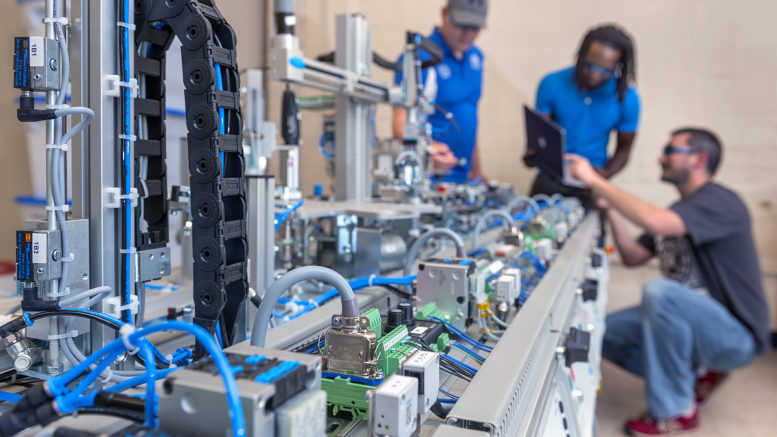Advanced systems of manufacturing bring vibrant economic changes and business growth — two things that are beneficial to the business landscape of South Carolina.
Think about the manufacturing evolution of antilock brakes, photocopiers and windshield wipers. All efficient, user-friendly products made from the use of advanced manufacturing principles. Those same principles embody the foundation of what is necessary in the future workforce of America when it comes to manufacturing and this is what has sprung a new discipline at many of our technical schools called Mechatronics.
This multidisciplinary field of engineering brings together elements of mechanical engineering, electrical engineering, and computer control and information technology. A contemporary, integrative design process like mechatronics leads to functional and adaptable products but also is becoming the backbone of the future manufacturing employee in the new economy.
Take for a momentum and think about advanced systems of manufacturing and how it relates to product production. A few of these include:
Enhanced features – Most product designs are mechanical in nature, providing only one function. A product design inspired by mechatronics offers the flexibility of adding features such as advanced user interfaces and safety elements.
User-Friendly – Mechatronics solutions are appealing to consumers because they make products easily accessible, user-friendly options. Mechatronics create an automated system that increases productivity and efficiency.
More Efficient – When mechatronics are used to add intelligence to the design, there is an improvement in the efficiency of a system. With the use of mechatronics, particular parts of a system can be shut off when it is not in use, encouraging energy conservation.
Lower Cost – Some of the factors that influence the cost of a product can be design time, product size and reliability. These three factors can be made more efficient with the help of mechatronic solutions, leading to decreasing product costs.
Flexible Design – With mechatronic design, many controlled parameters can be changed mid design without having to restart the product. The same hardware can be used for different products with different software. A multifunction ability gives flexibility for design and cuts down on costs.
Increased Reliability- Mechatronic inspired designs generally consist of digital system. Digital systems are not as prone to the wear and tear over time.
Safer – Adding intelligence to a system makes it safer. Many safety checks can be easily added to a design system when mechatronics are used to control the system.
Moving forward, manufacturers must embrace these new technologies, but also work harder with educational partners to ensure the workforce is ready for the challenges ahead. This type of workforce development is becoming increasingly crucial to economic development successes.
Automated workforce is no longer a term of the future. Many jobs in our area currently or will soon require mechatronics skills in design and manufacturing. Let’s continue to encourage and provide the South Carolina workforce with reasons and opportunities to efficiently prepare for the future of mechatronics.
Richard K. Blackwell is the executive director of Oconee Economic Alliance, which is dedicated to improving the quality of life for citizens of Oconee County by encouraging a diversified economy that attracts industrial and commercial investment and fosters retention of existing business and industry. To learn more visit www.InvestOconeeSC.com.


Be the first to comment on "Mechatronics and the future of the automated workforce"